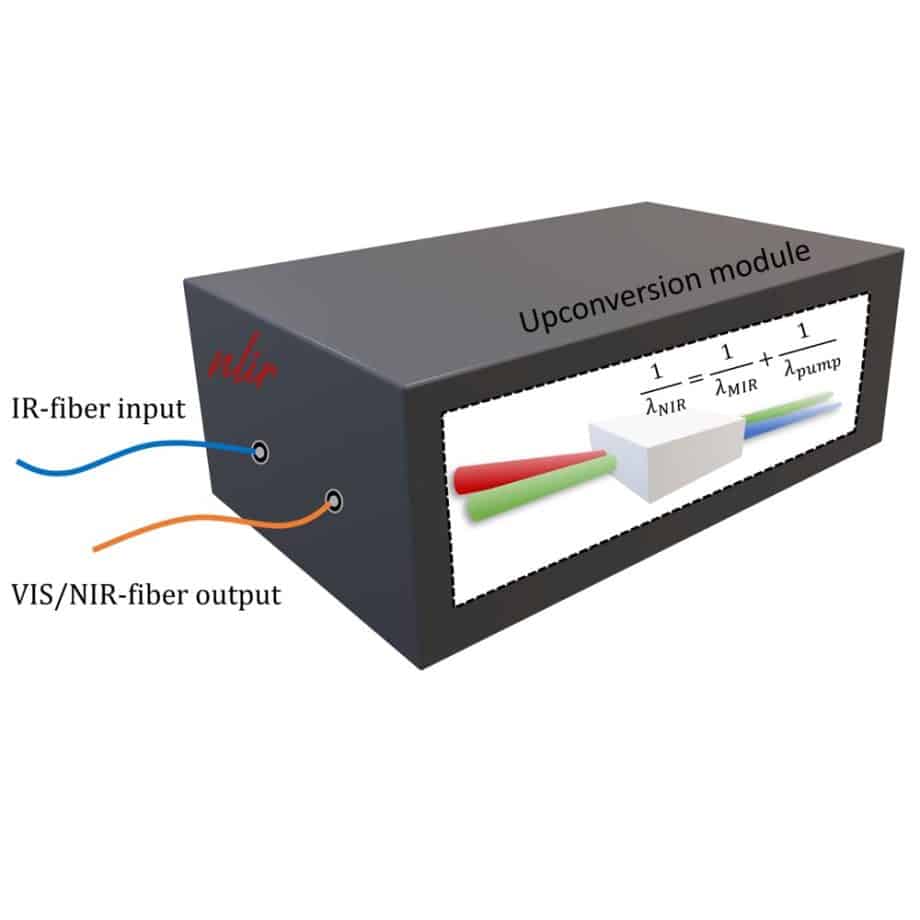Wavelength Conversion Module: Converting Mid-infrared Wavelengths to Near-Visible
The wavelength conversion module upconverts mid-infrared wavelengths to near-visible, which enables the use of Si and GaAs detectors.
The 1064 nm high power laser (inside of a LiNb03 crystal) converts the wavelength. Accepted wavelengths are in the bandwidth 2.0 – 5.3 µm. Only the vertical polarization is upconverted, which may reduce the amount of converted signal. However, it also reduces the converted noise by half. To trim additional extra noise, filter below 695 nm and above 886 nm.
In terms of noise-equivalent power, the wavelength conversion module’s efficiency measurement of approximately 0.001 outperforms many MIR detectors. For a narrower bandwidth (3.3 – 5.0 µm for example), the conversion efficiency is > 0.01. For a bandwidth of only 50 nm around 3.0 µm, the conversion efficiency is > 0.1.
Near visible wavelengths can have advantages over lower, noise-equivalent power. By just plugging the output fiber into a GHz GaAs detector, you’ll have immediate access to higher-than-average detection speed. 10 GHz or even 25 GHz detectors are available off-the-shelf. Even further, standard near-visible light detectors often come pre-amplified with a response of up to GV/W, which eases the electrical output measurement.
The NLIR wavelength conversion module is an extremely versatile tool for any mid-infrared laboratory. Flexibility in mid-infrared measurement equipment is often desirable but expensive to buy. The wavelength conversion model works with many affordable detectors and spectrometers. In many different cases, it performs better than more expensive, conventional mid-infrared detectors.
The spectral resolution of the upconverted light is approx. 2.5 cm-1.






